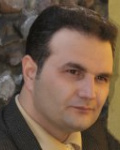| Authors | .Shariyat, M. Ashrafi H. Bandband, H |
|---|---|
| Journal | Universal Journal of Biomedical Engineering |
| Presented by | بلی |
| Page number | 11 – 26 |
| Volume number | 4 |
| Paper Type | Original Research |
| Published At | 2016 |
| Journal Grade | ISI |
| Journal Type | Electronic |
| Journal Country | United States |
Abstract
Numerous geometrically simplified models may be found in literature for simulation of the traumatic brain injuries due to the increased intracranial pressure caused by sever translational accelerations of the brain inside the cranium following the impact waves. Some researchers have used more accurate models but employed specific hyperelastic material models. No research has presented a comprehensive comparison among results of various geometric and hyperelasticity models, so far. In the present research, two distinct finite element models and four hyperelastic constitutive models (i.e., polynomial, Yeoh, Arruda-Boyce, and Ogden models) are employed to accomplish the mentioned task. Therefore, the motivation is checking accuracy of the modeling procedure and discussing the results according the traumatic brain injury criteria. In this regard, a realistic skull-brain model is reconstructed in CATIA software based on the MRI scans and employed for optimized mesh generation in HYPERMESH finite element software. Influence of the contact and nonlinear characteristics of the brain tissue are considered in simulation of the relative motions in LS-DYNA finite element code. Time histories of the accelerations and the pressures (von Mises stresses) are derived from ANSYS finite element analysis code. Finally, the responses are discussed based on the available traumatic brain injury criteria and tolerances. Comparisons made with the available experimental results for the four hyperelastic constitutive equations confirm that employing Arruda-Boyce or Ogden models may lead to inaccurate or even erroneous results. On the other hand, the polynomial model is the most accurate model but underestimates the injury probability and may be used with care.
